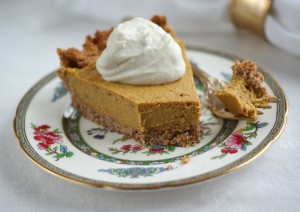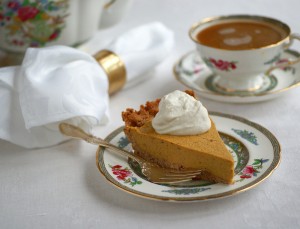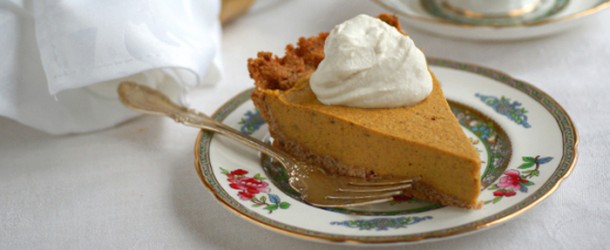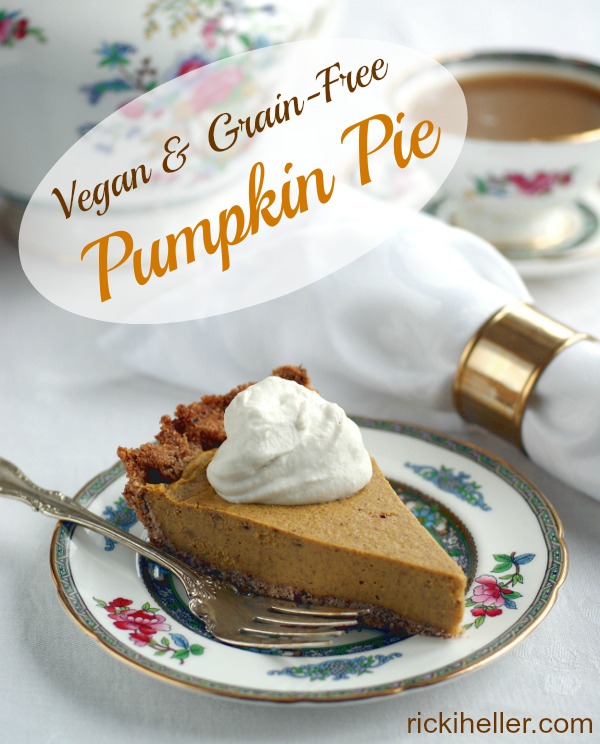 Despite possessing the usual female litany of insecurities, one skill set I’ve always felt confident about is baking. Growing up with a baker mom and an aunt who was a caterer, I learned to bake at a really young age. It wasn’t long before I felt totally at ease wielding a wooden spoon or creating my own recipes from scratch.
Despite possessing the usual female litany of insecurities, one skill set I’ve always felt confident about is baking. Growing up with a baker mom and an aunt who was a caterer, I learned to bake at a really young age. It wasn’t long before I felt totally at ease wielding a wooden spoon or creating my own recipes from scratch.
On the other hand, ask me to mix up traditional pie crust and you’ll see me quaking in my Doc Martens. You see, my mom never really taught me or my sisters how to make pie pastry–and for some reason, I never pursued that skill on my own, either.
That’s how I ended up at age 44 enrolled in the Baking Arts program at our local culinary college in Toronto. Although the program was traditional (read: no vegan or even vegetarian options; formal; very Cordon Bleu style methods), I knew that it devoted a segment to pies and pie crust, and I was keen to learn the basic techniques so I could then apply them to my own baking. On the day that we focused on pie pastry, I was a mess. I’d attempted pie crust perhaps half a dozen times in my entire life up until then, with, shall we say, less than stellar results (it did make a good doorstop, though).
After we’d donned our chef’s whites, industrial shoes and hairnets, the class gathered round the instructor to learn the type of pie she would demonstrate (and that we students would subsequently attempt ourselves). Turns out it wasn’t just any pie; it was traditional APPLE pie. A classic! Iconic! The Queen Pie of Pies! I felt faint.
With deft speed and running commentary about why we must keep the ingredients chilled, be careful not to touch the dough with our hands, use both lard and Crisco to attain an ideal flaky texture (plus many other pointers I’ve since wiped from my mind), the teacher presented the class with a perfectly smooth, golden disc of pie dough ready to chill in the fridge.
While the dough rested, she prepared a conventional filling that would, today, make my toenails curl: sliced apples, cinnamon, white sugar, regular cornstarch and–just for good measure–glucose syrup. Once she’d rolled out the dough, modeled how to drape it over the rolling pin, lay it in the pan and gently shape it, she then mounded the filling into it, topped it with another round of dough and set it to bake. Next, it was our turn.
The recipe yielded two double pie crusts: one to use in class, and a second to bring home with us for some future pie adventure. I followed the instructions exactly and was surprised when my pastry didn’t crack or break apart as I maneuvered it from the tabletop to the pie plate. Hurdle Number One passed successfully! I even managed to flute the crust and recreate the exact oval cuts in the top crust (to allow steam to vent) that my instructor had made in her own pie. Hurdle Number Two conquered! I engraved a tiny “RH” near the edge so I’d be able to identify my own pie when it emerged from the oven.
As we scrubbed the countertops, washed the dishes and swept the kitchen floor, the pies heaved, browned and bubbled, filling the entire work space with the enticing aroma of apple and cinnamon. I could hardly believe it–it smelled like “real” apple pie! We had just finished stacking the clean dishes on the shelves and placed our hairnets in the laundry basket when the timer went off.
I simply couldn’t believe how perfect the pie looked. Could it really be. . . . a successful apple pie, made by me? I was forced to wait until I got it home to find out (even back then, I didn’t eat white sugar or lard, so I transported the pie home with me to test it out on the HH). I placed the pan on the countertop, carefully sliced a thin wedge, and proffered the plate to the HH. He slid the fork into his mouth, began to chew. . . and said nothing.
 Suddenly, his face transformed. His cheeks flushed a little, and he closed his eyes as he continued to chew, and chew.
Suddenly, his face transformed. His cheeks flushed a little, and he closed his eyes as he continued to chew, and chew.
“This pie is. . . amazing!” he blurted, clearly shocked that it had been created by my hands. “This crust! It’s so flaky! It’s absolutely perfect! And mmm, the filling. . . .sooooo good. . . “. There was sugary, glucose-laden goo dripping down his lower lip. “Mmmm . . . the only thing that could make this better would be REAL ice cream! Do we have any real ice cream?” he asked.
“No,” I said.
“How about real whipped cream? Any of that?”
“No.” By now, I was beginning to feel a little annoyed. I mean, had the guy forgotten that we’d been eating natural, whole foods for years by that time?
“Oh, it doesn’t matter,” he continued. “This is the best dessert you’ve ever made! And you have a whole other crust you can use to make another one! This is GREAT!”.
I let him finish the slice and, as per his request, served another one. I placed the second disc of pastry in the freezer.
The HH ended up finishing that pie within 3 days. He ate a slice when he came home from work, one after dinner and took more of it to have at work.
As for me, I vowed to re-create the same gastronomic glory in a pie crust of my own making, using healthy, whole food ingredients, natural fats and sweeteners.
It took me a few years, but I did manage a flaky, buttery, rich-tasting pie crust that could rival the best of them. (I included that recipe in Naturally Sweet & Gluten-Free). In the end, though, I’ve come to accept that, like my mom, I’m just not a pastry kind of gal. And that’s okay. Sure, I can produce it when I need to, but it’s not what I turn to first. So, when I decided to create a perfect Pumpkin Pie for the holidays, I knew that the crust would be unconventional.
In this candida-diet friendly pie, the crust is much like a regular crumb crust. In other words, there’s no chilling, no rolling, no folding–no worry. Just press, fill, bake and serve. (Of course, if you do prefer a more conventional pastry, you can always go with something like the crust in this recipe).
This pumpkin filling is creamy, rich and perfectly spiced. It’s ever so slightly more dense than regular pumpkin pie, a function of the coconut butter (and lack of eggs that would otherwise hold it together). Once chilled, it slices beautifully, and retains its shape at room temperature.
A couple of years after I’d completed my baking course, I was planning a special home-cooked dinner for the HH’s birthday. “What would you like for dessert?” I asked.
“Hey, remember that amazing apple pie you made?” he said. “How about making another one like that?”
I nodded and looked askance. “Hmmm. . . . that’s a possibility,” I murmured, already daydreaming about what I could whip up instead. I wandered over to the fridge and opened the freezer compartment. There, still hiding behind the ice cube trays, was the disc of pastry I had placed there two years earlier. “Well, we’ve still got the crust, anyway,” I said.
Needless to say, we went with something different that year. The blob of lard and Crisco was quietly placed in the trash. The HH relished his Coconut Cream Pie. And this year, he enjoyed this Pumpkin Pie. With real coconut whipped cream, no less.
PS: With US Thanksgiving so close, I’ve been contemplating thankfulness. I wrote about why I’m thankful for Candida Related Complex on my friend Hallie’s blog (and check out the rest of her Thankful 30 series, too).
Looking for more Thanksgiving recipes? Here’s my mega roundup of 75+ Healthy, Whole Foods, Vegan& Gluten-Free recipes!
Grain-Free, Sugar-Free, Candida-Friendly Pumpkin Pie Recipe
If you’re on a sugar-free, Paleo or low glycemic diet and wish you could have pumpkin pie for the holidays…now you can! This pie has a very traditional flavor with an easy, press-in crumb crust. It’s also perfect with some ice cream or coconut whipped cream on top.
For the Crust:
- 1 cup (120 g) lightly toasted pecans
- 6 Tbsp (50 g) coconut flour
- 2 Tbsp (30 ml) whole psyllium husks
- 2 tsp (10 ml) cinnamon
- ½ tsp (2.5 ml) baking soda
- ½ tsp (2.5 ml) baking powder
- ¼ tsp (1 ml) fine sea salt
- ¼ cup (60 ml) softened organic coconut oil
- 1 Tbsp (15 ml) apple cider vinegar
- 10-20 drops plain or vanilla pure liquid stevia
- 3 Tbsp (45 ml) unsweetened alternative milk of choice
Preheat oven to 350F (180C). Grease a pie pan with coconut oil or nonstick spray.
In a food processor, whir together the nuts, coconut flour, psyllium, cinnamon, baking soda, baking powder and salt until powdered. Add remaining ingredients and pulse until combined in a thick, sticky dough. Pat the dough into the prepared pie plate and bake for 12 minutes. Remove from the oven and fill with pie filling (if the filling isn’t ready, keep the crust out of the oven until it is).
For the filling:
- 1/3 cup (80 ml) smooth natural cashew butter (it should contain just cashews or cashews plus a healthy oil)
- 1/3 cup (80 ml) gently melted coconut butter (not coconut oil)
400 ml (15 ounces) unsweetened pure pumpkin puree - 1/3 cup (80 ml) unsweetened alternative milk of choice
- ½ tsp English Toffee SweetLeaf Stevia
- ½ tsp vanilla or plain pure liquid stevia
- 2 tsp (10ml) cinnamon
- ¼ tsp (1 ml) nutmeg
- Pinch ground cloves
- ½ tsp (2.5 ml) dried ginger
- 2 tsp (10 ml) vanilla extract
- 1/8 tsp (.5 ml) fine sea salt, or to your taste
In a small, heavy-bottomed pot, combine the cashew butter and coconut butter. Melt over lowest possible heat until liquefied. Remove from heat and pour into the bowl of a food processor.
Add remaining ingredients to the processor and blend until perfectly smooth. Taste and adjust spices and stevia, if necessary. (Note that baked goods with stevia lose a bit of sweetness when baked. I usually aim for a slightly sweeter taste than I want when raw, so that it mellows while baking).
Pour the filling into the partially baked crust and smooth the top. Bake for 30-45 more minutes, until the crust is browned and the filling has firmed up somewhat (it may still jiggle a bit when you shake the pan). Allow to cool completely before storing, covered, in the refrigerator. Serve with coconut ice cream or whipped cream, if desired. Store, covered, in the refrigerator up to 4 days. Makes 8 servings. May be frozen.
Suitable for: ACD All stages, sugar-free, gluten-free, grain-free, dairy-free, egg free, soy-free, yeast-free, vegan, low glycemic.
Article and recipe originally appeared on RickiHeller.com

